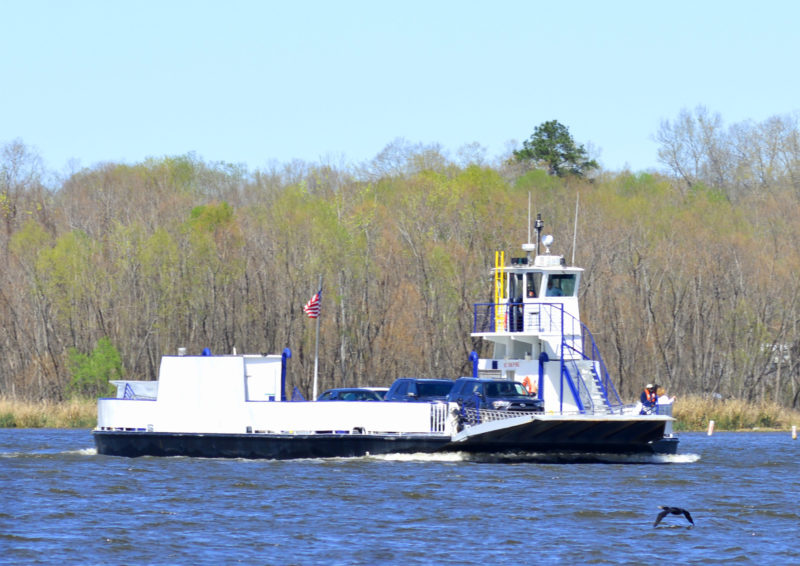Alabama this month is expected to seek bids from shipyards interested in converting the Gee’s Bend Ferry into the first zero-emission, all-electric passenger/vehicle ferry of its type in the U.S. and only the second in the world.
The pioneering venture is scheduled to have the 95’x42’x5’ steel vessel back in service this summer. Owned by the state and operated by HMS Ferries, the 24-vehicle/149-passenger ferry built in 2004 by Bonner Yacht Works, Elmore, Ala., makes five round-trips daily across the Alabama River between Gee’s Bend and Camden.
The $1.8 million project is funded in part with a $1.09 million Environmental Protection Agency (EPA) Diesel Emissions Reduction Act (DERA) grant. The state is kicking in the rest.
With the EPA program in mind, HMS suggested the conversion to the state, said Greg Dronkert, president of the Bainbridge Island, Wash.-based company. The ferry was a good candidate for the switch because it has decent wait times between the 20-minute trips and time to recharge overnight.
“And the technology is certainly there for this size vessel,” said Dronkert.
Operating costs will be about 50% less because fuel will be eliminated and replaced with cheaper electricity for the charging stations at both landings.
A modest sized battery bank is likely the most expensive single component of the new electric propulsion system, said state transportation department spokesman Josh Phillips. “With a project grant from the EPA, it is estimated that all the differential costs will be covered and result in immediate savings.”
The conversion will remove four 125-hp John Deere JD TO6068DF150 engines. Replacement equipment includes new electric propulsion — four AC 150-hp Baldor IDDRPM281504 motors, in alternate configuration with J-box mounted on top (air cooled). The motors will turn new Walter RO61 gears with a 3:1 reduction ratio, with vertically offset shafts and no reversing gear. Power storage will be a pair of Spear battery banks with 135-kWh capacity each.
For fire protection, each battery space will have a 3M Novec 1230 bottle of gaseous fire suppressant clean agent. The engine rooms will retain their existing carbon dioxide fire suppression system. And the horn will be converted from pneumatic to electric — a Kahlenberg model KB20.
“Multiple yards are capable of doing this work, both locally and regionally,” Dronkert said.
The 112’5”x34’x8’ Marissa Mae Nicole — one of two vessels in the state’s Mobile Bay Ferry service also operated by HMS — will cover the Gee’s Bend route while that ferry is in the yard.
The world’s first zero-emission ferry, the Ampere operated by Norway’s 80-vessel Norled AS fleet, entered service in February 2015. “Fuel costs are cut by almost 80 percent, which is why this is a major game-changer in the Norwegian ferry industry,” deputy CEO Lars Jacob Engelsen said via e-mail.
“The ferry has lithium-ion batteries. At each landing there is a nine-minute top-up charging. In addition there is a longer period of charging each night,” he said. “Our next project is turning commuter-vessels in cities green, addressing both environmental and congestion challenges.”





